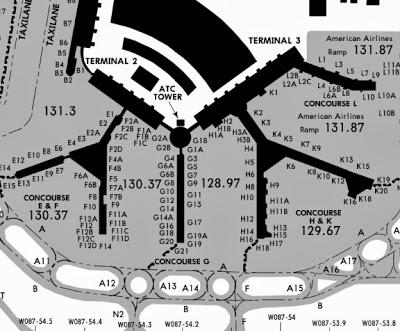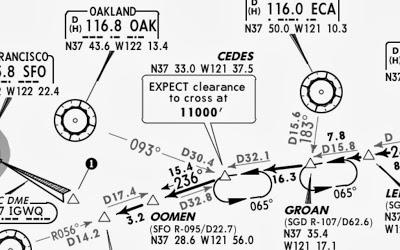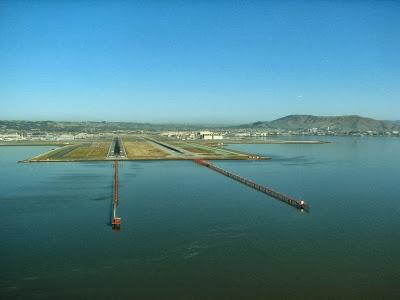I haven't exercised the privileges of my CFI certificate in years, but one of the most important lessons I've always tried to impress upon my students is to avoid the temptation to "rush to comply." Generally speaking, pilots are mission oriented. That's a term with military origins but it translates well to civil aviation as well. The average pilot wants to complete the mission, complete it with precision and complete it in a reasonably short amount of time. Whether real or imagined, the perception is that anything less isn't good enough and reflects poorly on a pilot’s ability.
The "rush to comply" usually occurs when a pilot is task saturated and time compressed. While it’s only natural for a pilot to feel pressured into complying with an assigned task, there isn't always enough time to safely do so and as we all know…it's easy to make mistakes when you're in a hurry. This is good life lesson material, but in aviation, the consequence for mistakes are often far greater than in other lines of work.
Chicago O'Hare is an airport where I commonly find myself in a rush to comply. I am not based at ORD and I don’t fly there with any regularity. The airport is laid out in a confusing manner and the ground controllers, who know the airport like the back of their hands, talk fast, give long clearances and expect the pilots to know the airport as well as they do. O'Hare also happens to be the home of some of the longest and most confusing taxi clearances I've ever received. Below is one of my favorites...I got this one on my last trip.
After clearing runway 27R: "Two left turns, charlie one, charlie, uniform, echo, gulf, tango, whisky hold short of runway 4 left." After clearing 4L: "Taxi echo, alpha, hotel, uniform, alpha and the alpha bridge."
Over the years I've discovered two cardinal sins at Chicago O’Hare…don’t ask the controller to repeat a clearance and don’t stop the aircraft. If you happen to screw up a taxi clearance, the controllers either don’t seem to notice or don’t seem to care as long as you keep moving, don’t hit anything and don’t get out of sequence for takeoff. And if you ask them to repeat a clearance? Expect to sit for a while. They'll get back to you when they feel like it.
On top of a confusing physical layout, the radio calls needed to depart O'Hare are unusual and out of the ordinary. Here's how my last departure went. The first radio call was to a company ramp controller on frequency 131.87 who issued a clearance to push away from the gate.
Me: "Ramp, flight 123, K15, pushback." Ramp: "Flight 123, cleared to push on the south line."
After push-back, I asked the ramp controller for permission to taxi and was told to contact Ground Metering on frequency 121.67. Ground meter was responsible for placing my flight in sequence for taxi.
Me: "Ground Meter, flight 123 off K15 with information Oscar." Ground Meter: "Flight 123, monitor ground point 75." (121.75...the 121 is understood)
At that point, I monitored the ground frequency until the ground controller issued a taxi clearance.
Ground: "Flight 123, taxi 9R via alpha, alpha 15, bravo, juliet."
That particular taxi route was actually pretty simple, but I always have a pen ready when waiting for a clearance at this airport.

While the clearance often sounds long, the taxi usually is not. As the captain taxis the airplane, I'm responsible for obtaining weight and balance closeout information. If the closeout doesn't come in a timely manner, I also have to make a radio call to load control to request the necessary data. I have to reload the FMS to account for any changes from the plan, run the Before Takeoff checklist and sometimes I have to get the second engine started if the captain elected to taxi out on one. It's very busy, involves a significant amount of heads-down time for the first officer and if everything doesn't go exactly as planned then the airplane will not be ready for takeoff by the time the flight reaches the departure end of the runway.
As important as it is to get everything done, it's more important to slow down and do the job the right...the first time. After all, if you don't think you have time to do it right, what makes you think you have enough time to do it twice? Typically, I'm pretty good at resisting the temptation to rush...but not always.
Two hours after taking off from Chicago O'Hare, we were still only half way through a four hour flight to San Francisco, which, as I Monday morning quarter-backed the flight, is what bothered me most...there was ample time to be fully prepared for the approach and landing. In my defense, the lack of preparedness was not entirely my fault, but I’ll get back to that. The wind at SFO was strong and gusty out of the west, blowing right down runways 28L and 28R. I kept a close watch on the weather as we made our way across the country with the knowledge that low clouds were expected in the Bay Area at our estimated time of arrival. But as we neared the top of descent, it appeared the forecast was inaccurate as the clouds never materialized and the airport continued to advertise visual approaches.
In the hours prior to our arrival, I familiarized myself with the airport layout and available approaches. My Jeppesen manual listed a total of six approaches (including charted visuals) to runway 28L and eleven to runway 28R. It would be impossible to be intimately familiar with them all, but with a little experience and common sense, any pilot could make an educated guess on which one to expect. Approaching the San Francisco area from the northeast on a good weather day, I expected to fly the QUIET BRIDGE VISUAL to runway 28L or 28R or the FMS BRIDGE VISUAL to runway 28R...the latter available only on request. After one last peek at the weather that confirmed visual conditions, I took a chance, briefed the FMS BRIDGE and prepared the cockpit for the procedure.

It turns out the forecast was correct, if not a little late. Well into the descent, we were told to contact NORCAL approach as we neared the 11,000 foot altitude restriction at CEDES (see above). “Flight 123, descend 9,000, information “whisky” is current, expect the LDA PRM runway 28R.” Well hell…now were well behind the power curve.
A Localizer type Directional Aid (LDA) is an instrument approach used in places where, due to terrain and other factors, the localizer antenna array is not aligned with the runway it serves. In these cases, the localizer antenna array may be offset (i.e. pointed or aimed) in such a way that the approach course it projects no longer lies along the extended runway centerline. (1) The Precision Runway Monitor (PRM) part of the equation adds training and procedural requirements for the pilots and air traffic controllers at airports with close parallel runways and approaches like the ones at San Francisco. In other words, the localizer offset and PRM procedures are necessary because the runways at SFO were built too close to run normal simultaneous approach procedures. (2)
We were very close to the airport at this point of the flight and needed time to prepare for a complicated procedure. Inside my Jeppesen manual is an entire page dedicated to the specifics of this particular approach…and one of the ball notes on that page includes the following verbiage. “Pilots who are unable to participate will be afforded appropriate arrival services as operational conditions permit and must notify the controlling ARTCC as soon as practical, but as least 100 miles from destination.”

We were well within 100 miles by the time we were told to expect the PRM approach and the ATIS report received just before the hand off to NORCAL instructed pilots to expect visual approaches. It would have been well within reason to turn down the PRM approach, but as I said before, pilots are mission oriented and we would do our best to comply. The captain and I got out the appropriate approach charts from our manuals and proceeded to split up duties as if we had planned the whole thing. I reprogrammed the FMS as the captain briefed the approach. We both reset minimums, changed the approach course and tuned and identified the appropriate navigation frequency. As the captain maneuvered the airplane around mushrooming cumulus clouds on the arrival, I asked the flight attendants to prepare the cabin for landing and worked my way through the “before landing” checklist...all while trying to read through the lengthy instructions for the PRM approach. I did my best to take in and make note of the important items, the most confusing of which involved the use of two communication frequencies to be tuned and monitored at a specific moment on the approach. I must have read that part ten times before it sunk in.
I could easily have spent 30 minutes studying these procedures while straight and level at 40,000 feet, but spent only a few minutes reviewing the highlights as we bumped through the sky in the last few thousand feet before receiving a clearance to fly the approach. It was senseless and it made me a little angry…an emotion that helped little.
There were a number of options that would have served us well. First, we could have declined the PRM approach. That would most likely have resulted in a delay and possibly a short time in holding while ATC created the extra room needed to get us into San Francisco using standard approach spacing. The second option would be to accept the approach but request vectors or holding while we reviewed the procedures. Both would have been smart and professional moves…but we were on a mission.
In our case, the mission was completed with success. By the time we intercepted the final approach segment of the approach, we were all set up. I managed to read the entire PRM instructions page and completed all the necessary checklists. As the glideslope came off the peg, everything was done except to fly the airplane, monitor the approach and ensure the additional PRM procedures were followed. We got it done, but it was a lot of unnecessary work during an already busy time of flight.

Short final runway 28L. Not my picture...obviously taken on a nicer weather day.
As we passed over the seawall, just before the landing threshold of runway 28R, I glanced to the left and noticed fresh, clean stone on the newly repaired wall shy of runway 28L…next time I think I’ll insist on a little more time to prepare.